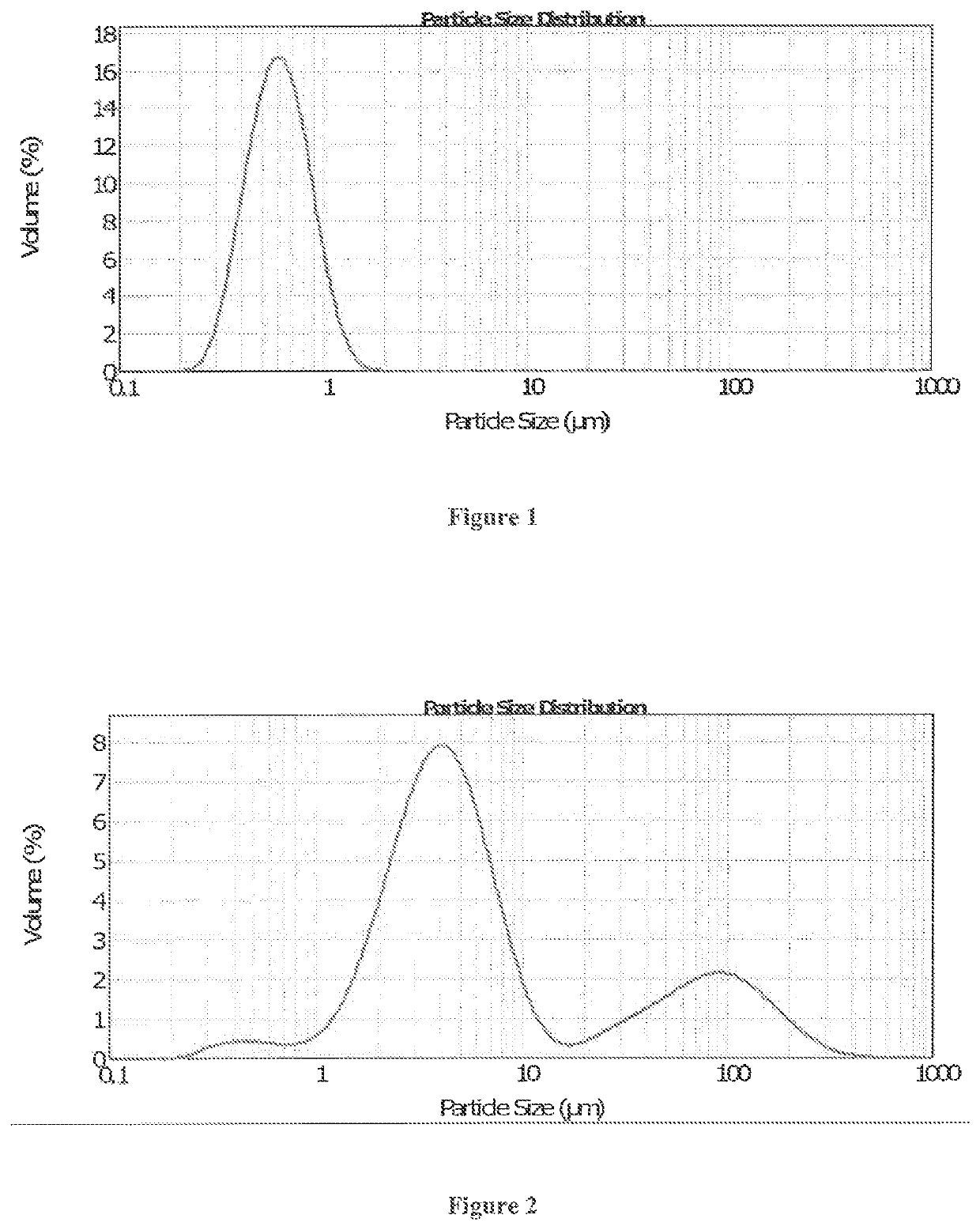Production of Re-188/186 particles
a technology of re-188/186 and particle, which is applied in the direction of nuclear engineering, therapy, conversion outside the reactor/acceleration, etc., can solve the problems of high morbidity and often psychological and economic burden, recommended for patients younger than 60 years, and high failure probability, etc., to achieve easy control of particle size, particle composition and nature and amount of impurities, and small amount of produced particles , the effect of small loss of financial resources
- Summary
- Abstract
- Description
- Claims
- Application Information
AI Technical Summary
Benefits of technology
Problems solved by technology
Method used
Image
Examples
example 1
on of Activated Particles
[0101]Enriched metallic 187Re (Traces Sciences International Corp, Canada; 99.6% 187Re, 0.4% 185Re) is reacted with H2O2 under alkaline conditions. The resulting solution of NH4187ReO4 (about 10 mg) is mixed with 2.5 g thioacetamide, 3 mg PVP and 1 milliliter concentrated HCl and heated at 90° C. for 30 minutes. The particles are precipitated by centrifugation and the precipitate is separated from other residuals of the chemical reaction, as well as components that did not react (e.g. thioacetamide). Starting particles comprising 187Re2S7 are thus obtained. The particle size distribution of the obtained particles is depicted in FIG. 1. Only a single peak corresponding to a unimodal particle size distribution is visible. Undesired elements and organic impurities from the synthesis are analyzed for acceptance of the batch.
[0102]The starting particles obtained as described above (about 10 mg, based on the weight of rhenium) are irradiated at a neutron flux of 1...
example 2
ve Example
[0103]Carrier-free 188Re (as perrhenate) is obtained from a 188W / 188Re generator by elution with saline. The solution (about 3 mg NH4188ReO4 per 10 ml) is processed to 188Re2S7 by adding thioacetamide and concentrated HCl as well as heating (90° C. for 30 minutes). The particle size distribution is analyzed, of a sample which has been stored until the radioactivity had decayed sufficiently. The obtained distribution is shown in FIG. 2. At least two different peaks can be distinguished, suggesting an at least bimodal particle size distribution.
[0104]Specific embodiments of the present invention are indicated in the following clauses:[0105](1) A process of producing activated particles comprising 188Re and / or 186Re, comprising:[0106]a) providing non-volatile and water-insoluble starting particles comprising a rhenium compound,[0107]b) irradiating the particles with neutrons, wherein at least part of the 187Re atoms undergo a neutron capture to form 188Re and / or wherein at le...
PUM
 Login to View More
Login to View More Abstract
Description
Claims
Application Information
 Login to View More
Login to View More - R&D
- Intellectual Property
- Life Sciences
- Materials
- Tech Scout
- Unparalleled Data Quality
- Higher Quality Content
- 60% Fewer Hallucinations
Browse by: Latest US Patents, China's latest patents, Technical Efficacy Thesaurus, Application Domain, Technology Topic, Popular Technical Reports.
© 2025 PatSnap. All rights reserved.Legal|Privacy policy|Modern Slavery Act Transparency Statement|Sitemap|About US| Contact US: help@patsnap.com

